A concrete slab is one of the strongest and most durable surfaces for any property, but it can still sink over time. This can happen due to the soil beneath the slab shrinking, settling, or becoming unstable from water leaks or other causes. A sinking concrete slab can be a significant issue that requires prompt action before it leads to more significant structural damage. In this post, we’ll look at how to fix a concrete slab that is sinking and restore it to its original condition.
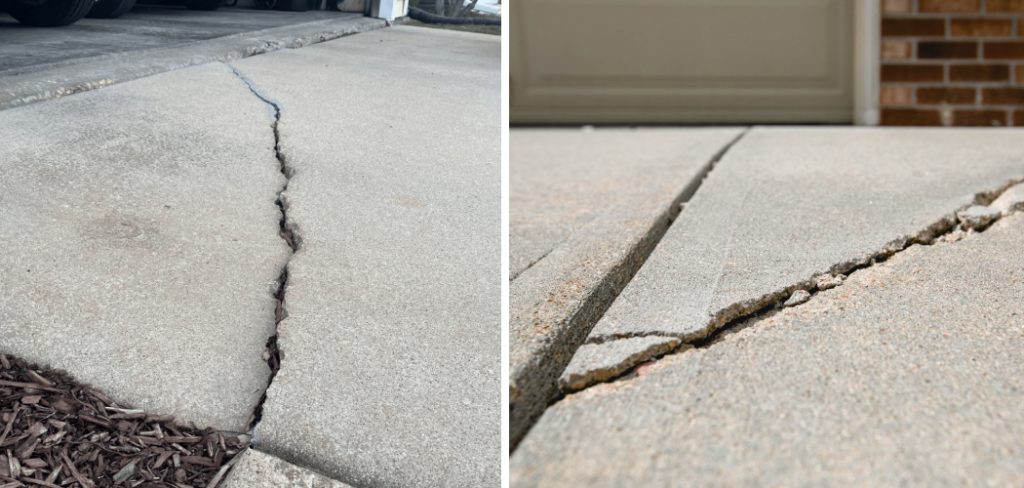
Can You Fix a Concrete Slab that Is Sinking?
Have you noticed that your concrete slab seems to be sinking in certain areas? Don’t worry; this is a common problem faced by many homeowners. Unfortunately, ignoring this issue can cause serious structural damage and even make your property unsafe. However, fixing a sinking concrete slab is not an impossible task.
You can consider options such as slab jacking, which is a process of injecting a mixture of cement and other materials into the concrete slab to raise it back to its original position. Or, you can opt for foam jacking, a similar process using polyurethane foam instead. In any case, it’s important to address this problem as soon as possible to prevent further damage.
Why Should You Fix a Concrete Slab that Is Sinking?
When you first notice that your concrete slab is sinking, you may be tempted to overlook it. After all, it’s just a small dip in the ground, right? But the truth is that even a small sinking concrete slab can cause serious problems for your property.
Not only can it be unsightly, but it can also pose a safety hazard for anyone walking or driving over it. Additionally, a sinking slab can indicate larger, underlying foundation issues that may worsen over time if left unaddressed. By taking the time to fix your sinking concrete slab, you can protect both your property and your wallet from potential damage in the future.
How to Fix a Concrete Slab that Is Sinking – in 7 Easy Steps
Step 1: Evaluate the Cause of The Sinking Slab
The first step in fixing a sinking concrete slab is to determine the root cause of the problem. This will help you select the best method to fix the slab. Some common causes of a sinking concrete slab include soil erosion, poor compaction during installation, and water leaks. You will need to inspect the slab carefully to determine what is causing it to sink.
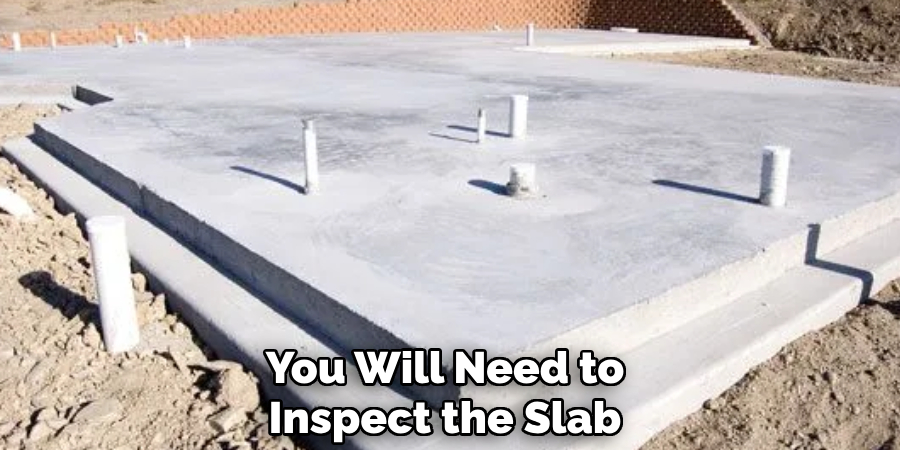
Step 2: Level the Slab
Once you have a clear idea of what is causing the slab to sink, it’s time to level it. This can be done by injecting a high-density foam under the slab, which will expand to lift and level it. Alternatively, you can use a mudjacking technique, where a mixture of concrete and soil is injected under the slab to raise it to its original position.
Step 3: Repair Cracks
Once the slab has been raised to its original position, you may notice some cracks. These must be repaired to prevent water from seeping under the slab and causing further damage. You can fix these cracks by using a concrete patching compound to fill them, then smoothing the surface with a trowel.
Step 4: Seal the Edges
To prevent further sinking and damage, it’s important to seal the edges of the slab. This can be done by applying a waterproof sealant along the perimeter of the slab, including any joints or cracks. This will help to keep water out and maintain the stability of the slab.
Step 5: Address Drainage Issues
If your sinking concrete slab was caused by poor drainage, it’s important to address this issue before fixing the slab. Make sure that gutters and downspouts are directing water away from the foundation of your home, and consider grading your yard to direct water away from the area where the slab is located.
Step 6: Reinforce with Rebar
For long-lasting results, consider reinforcing your repaired slab with rebar. This will help prevent sinking and cracking and provide extra stability for heavy loads. Simply place the rebar in a grid pattern on top of the slab before pouring fresh concrete over it.
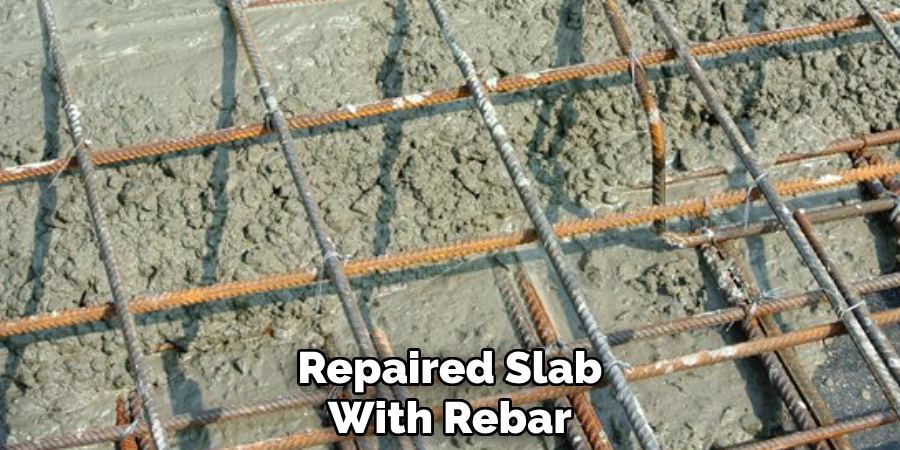
Step 7: Regular Maintenance
To ensure that your repaired concrete slab stays level and stable, it’s important to perform regular maintenance. This includes keeping the edges sealed, addressing any drainage issues promptly, and fixing any cracks or damage as soon as they appear. By staying on top of maintenance, you can prevent future sinking and prolong the life of your concrete slab.
With these steps in mind, you now have the knowledge and tools to successfully fix a sinking concrete slab. Remember to always evaluate the cause, level and repair the slab, seal the edges, address drainage issues, reinforce with rebar, and perform regular maintenance for a stable and long-lasting concrete slab. Don’t let a sinking slab be a source of stress in your home any longer – follow these steps and enjoy a safe and sturdy foundation. So, if you ever encounter this issue again, you’ll know exactly what to do!
5 Considerations Things When You Need to Fix a Concrete Slab That Is Sinking
1. Assess the Damage
The first step in fixing a concrete slab that is sinking is to assess the damage. This includes looking for any cracks, holes, or other signs of structural damage. You should also check the surrounding area to see if there are any changes in elevation or drainage issues that may have caused the slab to sink. Once you have identified the problem, you can plan a course of action.
2. Repair Any Structural Damage
If your assessment reveals any structural damage, such as cracks or holes, it is important to repair them before fixing the sinking slab. This will help ensure that the repairs are successful and will prevent any further damage from occurring. It is best to use a high-quality epoxy or concrete patching compound for this repair work.
3. Install Supports
Once any structural damage has been repaired, you will need to install supports underneath the slab to lift it back into place. These supports should be made from high-strength steel or concrete and placed at least 18 inches apart for maximum stability and support. If possible, it is best to completely encase the supports in concrete so they cannot move around once installed.
4. Raise and Level the Slab
Once all of the supports are installed, you can begin raising and leveling the slab back into place using a hydraulic jack or other lifting device. It is important to raise and level slowly to avoid causing further damage or cracking in the slab itself. Additionally, you should make sure that you are constantly checking for levelness as you go along so that your final result is even and level across its entire surface area.
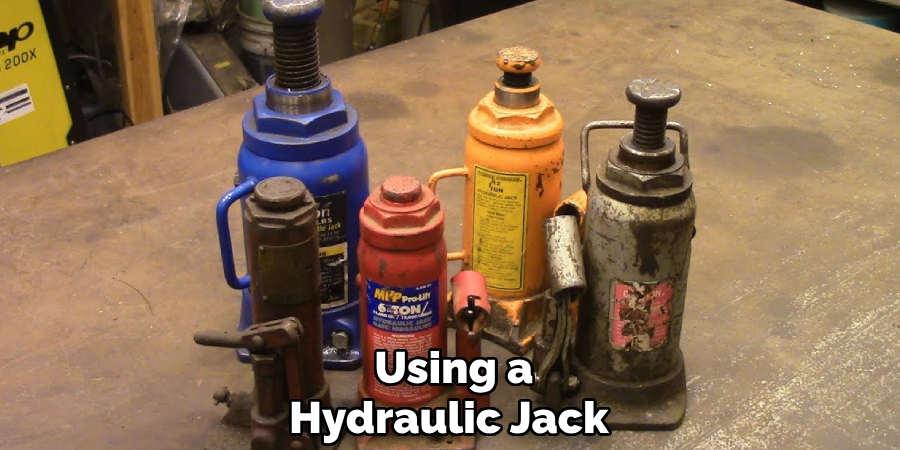
5. Fill Gaps with Concrete
Once your slab has been raised and leveled into place, there may still be some gaps between it and its surrounding surface area due to settling over time. To fill these gaps, you should use a high-quality concrete mixture that can be troweled or poured into place until all gaps are filled in completely flush with their surroundings
5 Benefits of Fix a Concrete Slab That Is Sinking
1. Improved Safety
Fixing a concrete slab that is sinking can help to improve safety in the area. When a concrete slab sinks, it can create an uneven surface that can be dangerous for people walking on it. Fixing the slab will help ensure the surface is level and free of any potential hazards. Additionally, fixing a slab that is sinking can help to prevent further damage from occurring, such as cracks or other structural issues.
2. Increased Property Value
Fixing a concrete slab that is sinking can also help to increase the value of your property. When potential buyers are looking at homes, they are often put off by uneven surfaces or other signs of disrepair. By repairing a sinking slab, you can show potential buyers that your home has been well-maintained and is in good condition. This can help to add value to your home and make it more attractive to buyers.
3. Reduced Maintenance Costs
Fixing a concrete slab that is sinking can also help to reduce maintenance costs over time. If left unrepaired, the slab may continue to sink and cause further damage to surrounding areas such as driveways or walkways. Repairing the slab now can prevent this from happening and save you money in the long run by avoiding costly repairs down the line.
4. Improved Aesthetics
Fixing a concrete slab that is sinking can also improve the aesthetics of your home or business premises. An uneven surface is unsightly and detracts from the overall appearance of an area. In contrast, a level surface looks much better and helps to create an inviting atmosphere for visitors or customers.
5. Improved Drainage
Finally, fixing a concrete slab that is sinking can also help improve drainage in an area by allowing water to flow properly away from the structure instead of pooling around it due to an uneven surface. Proper drainage ensures that no water seeps into any cracks or crevices in your foundation, which could lead to water damage over time if left unchecked.
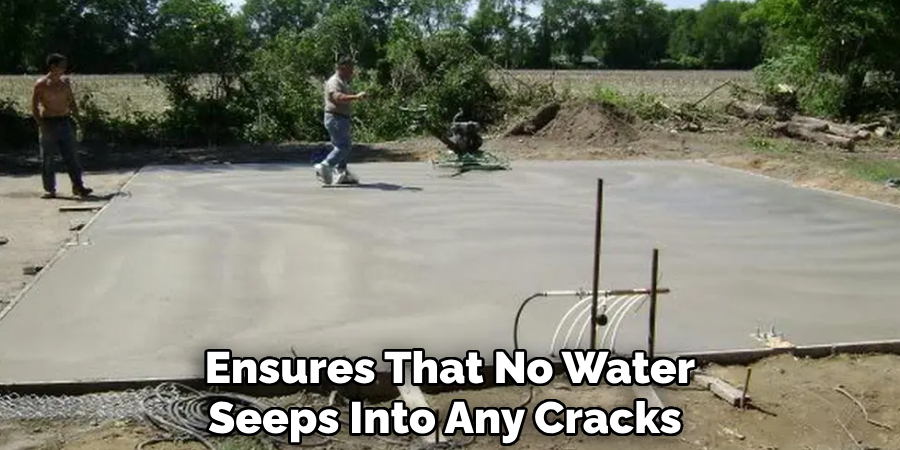
Conclusion
A sinking concrete slab can be a significant issue that requires immediate attention to prevent further damage to your property. By following the steps outlined above, you can fix and restore it to its original condition effectively.
It is crucial to contact an experienced contractor for proper assessment and repair to avoid mistakes that will cost you even more money and time. It is worth it to make sure your home or business stays safe and secure. Thanks for reading our post about how to fix a concrete slab that is sinking.
